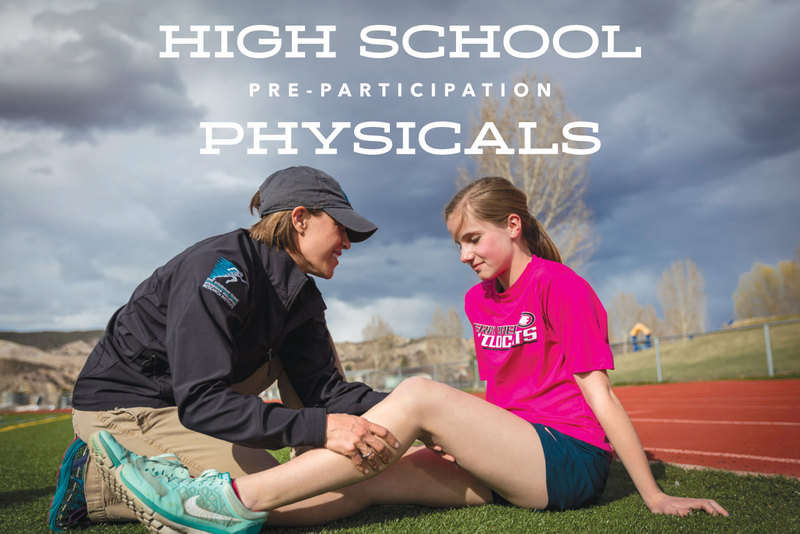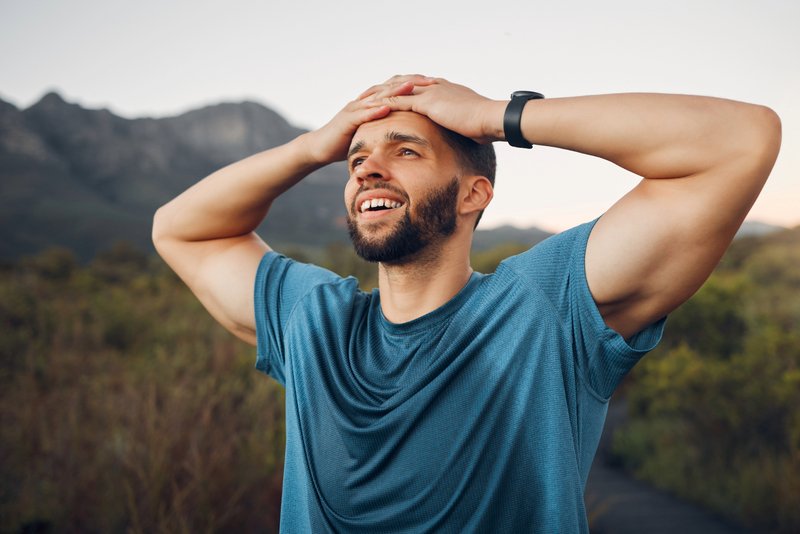News
Mountains of Discovery
Jason Moore PhD PA knows that not everything we abide by in the world of medicine is irrefutable fact. Actually disputing common practices and finding better ways to provide treatment is a passionate side project for some local doctors and therapists whose discoveries are making a significant impact locally regionally and nationally too.
If you want someone to change their perspectives especially in the medical field you have to provide evidence-based research Moore says. Medical myth busting is the challenge.
Moore an epidemiologist practices trauma and critical care medicine at Vail Valley Medical Center. He began observing patterns among his patients who had sustained ski and snowboard injuries.
We noticed that over time on days when the snowfall was deep it was more extremity-type injuries- hands wrists ankles et cetera. In the spring when there was less snow it was head chest and abdominal injuries. As I looked into it further I saw that nobody had studied that component of injuries Moore says.
Moore took it upon himself to conduct a study analyzing a total of over 600 trauma patients who had sustained injuries on regional mountains while skiing and snowboarding paying special attention to injuries resulting from collisions and also the amount (or lack) of snowfall. While his conclusions were not surprising they were powerful because they involved real provable data.
The injury severity is worse when there's little snowfall Moore says. If there's less than two inches of snowfall the risk of an injury being severe or critical is almost three times higher.
Moore's research also shows that the odds of an injury being critical such as involving major trauma to the head or chest are greater when there is an inch or less of new snow. Skiers and snowboarders who have taken a tumble in powder know it's much less painful than a fall on hard-packed snow but Moore emphasizes that the moral of his findings is when there is more snow it slows things down on the mountain.
What we attribute the injuries to is increased speed when there's less snow. It's not so much the padding of the powder but it's that you go slower when there's more snow out there. The lesson is control your speed. Speed kills he says.
One of the leading researchers at VVMC Moore has published multiple studies over the years. Recently he evaluated data with seven regional hospitals in a study that concluded that doctors generally prescribe antibiotics that are both too strong for the diagnosed infection and for too long a duration of time for their patients. He authored a related study specifically addressing the use of antibiotics in pediatric patients with acute bacterial skin and skin structure infection (ABSSSI). Among the most common infections requiring hospitalization these infections exert a substantial burden on the healthcare system with approximately three million pediatric healthcare visits per year. Hospitalizalations for ABSSI among children has more than doubled over the last 15 years triggering an increasing cost of care and need for invasive procedures. "Despite the increasing frequency of hospitalizations for ABSSI among children there was limited data regarding antibiotic prescription for these kids" says Moore. Recent studies specific to adults demonstrated frequent use of antibiotics for a prolonged period presented opportunity to reduce unnecessary antibiotic use. "We sought to evaluate whether similar opportunities exist in pediatric patients and found that there is in fact opportunity to reduce the use of antibiotics thus reducing healthcare costs as well as concerns of parents." Thanks to these studies hospitals and clinics can now re-educate their providers to avoid over-prescribing.
Next Moore is delving into a study on how marijuanause affects injury rates among skiers and snowboarders. "It's remarkable to see research coming from a small rural hospital like Vail Valley Medical Center but it's extremely rewarding to contribute to the body of medical knowledge and be a part of evolving trends in healthcare" says Moore.
MOVEMENT EVALUATION
As a physical therapist at the foot of a ski mountain Howard Head Sports Medicine's Thomas Olson has had ample opportunity to help athletes recover from injuries. But what about predicting them before they occur? Turns out there's a way to determine the potential risk of injury for traditional sports such as volleyball football and basketball. It centers around the Functional Movement Screen (FMS) and the YBalanceTest which are a series of exercises such as squats lunges reaches one-leg balance and flexibility used to evaluate an athlete's basic movements. If the athlete scores 14 or below on the FMS a result showing either low scores in one or more of the exercises or that the athlete has displayed an asymmetry in his or her movements it has been shown that the athlete is three and a half times more likely to sustain a serious long-term injury (torn knee ligament broken bone etc.) when competing or training in his or her sport. The idea is that if you conduct a screening like this you can potentially identify those individuals who are at greater risk for injury and then intervene Olson says.
Maybe its strength and flexibility that needs to be improved. Maybe it's motor control. In areas of concern indicated by the tests you can work with the athlete and use the test again to see if these measures have improved the athlete's performance and decreased the risk of injury.
The tests have never been used to predict the risk of injury among competitive skiers and snowboarders and Olson decided to look into it. He began analyzing FMS test results and injury rates among a group of 136 Ski and Snowboard Club Vail athletes in August 2010. Set to be completed in August 2015 Olson has been able to determine that although the test has proven both valuable and telling in predicting risk of injury in traditional sports athletes it's not as helpful in predicting injuries among competitive skiers and snowboarders. Low scores on the movement test don't mean the skiers and snowboarders have a higher risk of injury which is good news for them. On the other hand the risk of injury is unfortunately increased by factors outside of their control.
Certainly these tests can still be used to assess physical readiness to perform but they may not be that gold standard for predicting risk of injury that they are for other sports Olson says pointing out that the risk of injury in skiing and snowboarding may be largely based on environmental factors such as those indicated in Moore's research.
Snow conditions are just one of the variables you encounter [related to risk of injury] that aren't as important in sports like football or volleyball Olson says. Plus you've got terrain tuning of equipment ... how injuries vary from one hill to the next. When you start thinking about all of that it's understandable that there is a lot more to consider.
While we are not a research or university hospital we have special opportunities to learn from our unique mountain setting and contribute our findings to the world says Moore.
So the next time you decide to go all-out speed skier style when the snow report says no new accumulation consider the evidence-based research. Vail Valley Medical Center's physicians and therapists are not only here to provide informed state-of-the-art care but they are working hard to save you a trip to the hospital and pharmacy as well.
About Vail Valley Medical Center
From modest beginnings in 1965 VVMC has grown into one of the world's most advanced mountain hospitals providing Olympic-quality sports medicine leading evidence-based research modern cancer care and extensive cardiology services all top-quality services with exceptional outcomes. An independent nonprofit medical center VVMC keeps hundreds of jobs and resources local better serving our community and visitors. Providing superior health services with compassion and exceptional outcomes VVMC offers expanding services low infection rates free community services and top-rated patient satisfaction scores. For more information please visit www.vvmc.com.
About Howard Head Sports Medicine
Howard Head Sports Medicine | howardhead.com | (970) 476-1225
Howard Head Sports Medicine offers a variety of physical and occupational therapy services at 10 locations in Eagle and Summit Counties. They will open a new clinic in Breckenridge this fall. With over 50 trained therapists Howard Head's innovative sports medicine treatments and state-of-the-art equipment help people get back to the activities they love.
More News
-
New!
More

Vail Health and The Steadman Clinic Offer Free Physicals for High School Athletes
Physicals will be offered in both English and Spanish on two dates, May 17 at Battle Mountain High School and May 24 at Eagle Valley High School.
-
New!
More

Good Stress?
“Good stress” sounds like an oxymoron. After all, we’ve always been told stress is bad for our health. However, it’s possible that some stressors can actually be good for us and even enhance our lives.
-
More

Considering Cosmetic Procedures
As we age, our skin loses its elasticity and can leave some feeling less confident in their physical appearance. Cosmetic procedures can empower individuals to enhance their self-esteem and improve their overall quality of life.
